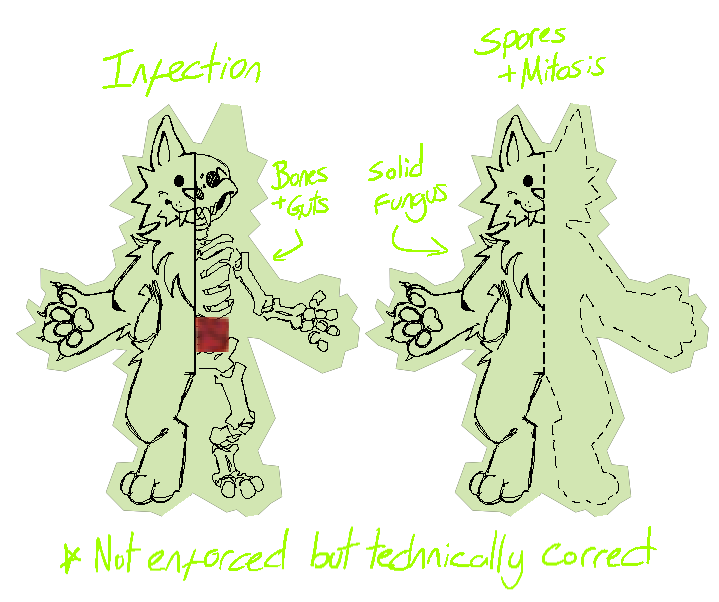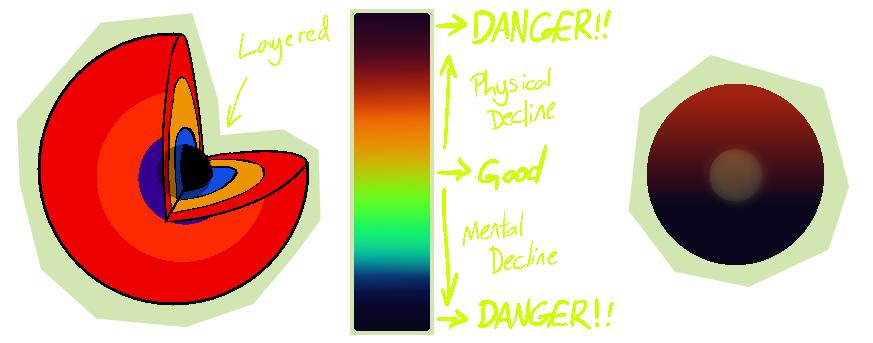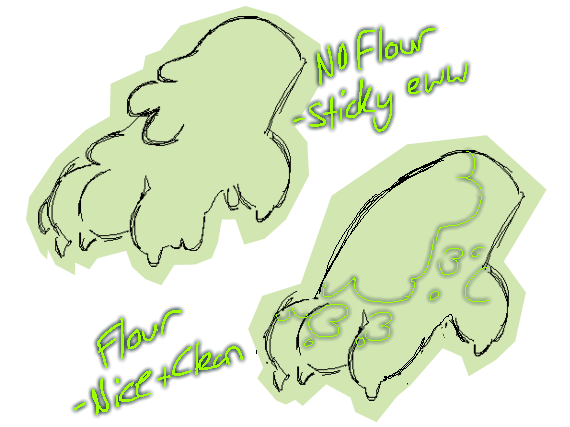
5Ca. General Maintenance
Living conditions vary from species to species however one thing thats for certain is that
in order to live, fungi need some ammount of nutrients, water and oxygen. This is the same for
Fungaloids and as long as they have what their species requires they can live practically forever,
with there being no roof to their lifespan. This does come with alot of unwanted side effects
however, causing Fungaloids to have to keep a good grasp on both their physical and mental health.
It is optional (and may depend on how the Fungaloid originally formed) for a Fungaloid to have
organs or other body structures like bones. Due to fungi absorbing nutrients through their skin,
eating and other bodily functions are practically useless but still possible.

It's very common that after reaching the ancient stage and onwards, Fungaloids will begin a
mental decline where it takes more for the body to function and over time an increasing hunger takes
over their mind, result in feral behaviours and a loss of self identity. In order to prevent or
at the very least slow this effect it is suggested to split off un-needed mass in order to lower
the amount of nutrients needed to survive and to keep the mind busy and healthy.
---
Cores
No matter what, each and every living Fungaloid has a core. This core is formed once the infected
spores become a part of the fungus that forms the Fungaloid, in cases of mitosis and infection, the
core will begin to form either once the split is complete or once the infection process is complete.
This core can be within any part of the body however its usually found within the head or torso to
maximise protection (similarily this core can be exposed from the skin but must remain atleast
partially within the fungus flesh).

The Core of a Fungaloid is by far the most important and most protected part of the body.
Not only does it contain the soul of the fungaloid, being the part that gives them their sentience
but it also is a good indicator to the Fungaloids physical and mental health.
If this core is to be badly damaged and is cracked or broken down to the center, the Fungaloid
will die.

As a Fungaloid ages this core will grow in layers similair to how a tree grows rings,
and the coloured gradient shown on this outer layer visualises the Fungaloids current
physical and mental state. As more layers grow the core gains a higher defence with it
starting out at the size of around a golf ball in sporelings to being the size of a
bowling ball by the time a Fungaloid becomes an Elder, with it increasingly growing
as time goes on.

At all costs this core needs to be protected!
---
5Cb. Mould Maintenance
Due to mould being the most equivalent to fur out of the 4 types, Mouldlings
benefit from similair habits to taking care of fur such as brushing.
Also similair to fur on other animals, Mouldlings go through shedding and growth periods
in order to regulate their body heat if their environment is not benificial to their
species' preferances.
---
5Cc. Mushroom Maintenance
Similair to Mouldlings, Mushlings can often grow off-shoots which occasionally may be
unideal to the Fungaloid and so shaving/chopping of these shoots can be done and will not hurt
the fungaloid, with it being equvalent to shaving or cutting hair.
---
5Cd. Yeast Maintenance
Yeastlings will often be made up of doughy materials, this would be fine if it didn't
make a massive mess especially when the dough becomes wet and sticky due to the high humidity
environments common in Fungaloid living spaces. To combat this, dough based Yeastlings will
often take flour baths in order to reduce this stickiness.

It is also recommended that Yeastling often check on glass containers if prescent to
look for cracks of imperfections that may lead to leakages.
---
5Ce. Rust Maintenance
Rustlings are generally pretty resilient so most of their maintenence comes down to keeping
their host plant alive and replacing modifications when necessary.
---
